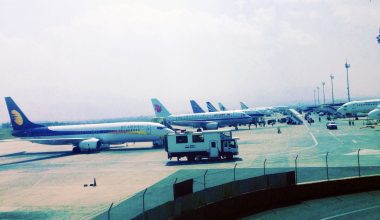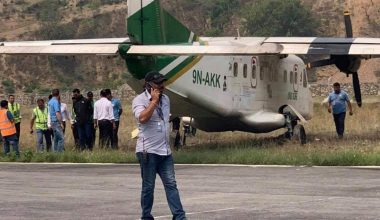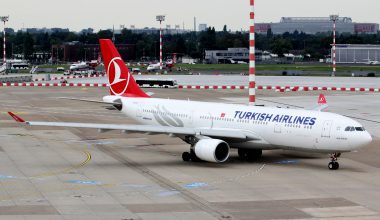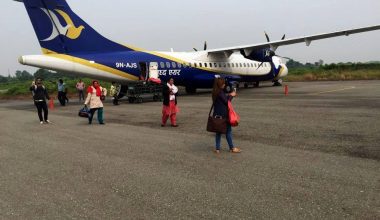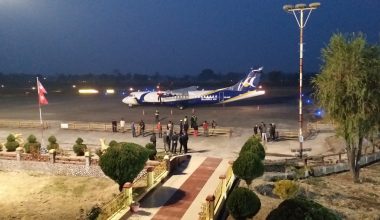TIA; Nation’s Solo International Airport Overlooked By The Concerned Authorities
UPAMA NEPAL
Kathmandu – 11 August 2016
Even though, its history dates back to 1949 A.D. when it was just an airfield with grass runway, Tribhuvan International Airport(TIA) certainly had its time of run to develop and be in way better state than it probably is now. Considered a bottleneck, it covers an area of 10,240 meters square making it relatively small than other international airports around the world. Some 25 international airlines and 18 domestic airlines transit through the Nepalese sky which is comparatively soaring but this privilege in the airline industry continually has turned as the impediment in the Nepalese aviation because of the numerous decades old yet unresolved persistent issues encountering TIA. As of 2015, the total aircraft movement in the airport runway is 26,563 operations including both take off and landings but if only 0.1% of the Indian and Chinese population visit the country based on the growing tourism in Nepal, the infrastructure of TIA limits the possibility to handle the operations for all those passengers taking in account its chronic management at recent times when the numbers of passengers are increasing.
The most significant setback considered for TIA has been its one and only runway. The 50 years old runway has its length at 10,007 feet along with its width at 150 feet and its orientation at 02/20. The only and ageing runway does not meet the ICAO safety requirements as it needs a longer length and certainly must be wider.Realizing that the most important feature of the airfield pavement is its capacity to ride out the continual use by the most weight-demanding aircraft that operates at an airport among others, the growing number of airlines along with the CAAN’s attempt to connect with different continents has brought bigger and bulkier aircraft in the airport’s airspace and certainly in its runway which was originally built to support 196 tons everyday way long ago, in 1967, but now it handles about 300 tons and it’s still running.


A study conducted by CAAN in 2014 had concluded that the runway at TIA did not have strength enough to handle wide-body aircraft due to its ageing asphalt foundation, and distress is caused to the upper surface instantly when heavy jets land. The damage to the lower asphalt layers is reflected quickly in the upper surface, resulting in cracks and other damage to the runway. The recent 7.8 magnitude earthquake has certainly created more havoc to the airport’s management with the evolving cracks. Incessant contingencies of cracks on the runway at the country’s exclusive international aerial departure have been obstructing smooth operation of aircraft since 2011. Plenty of flights have been averted or delayed in latter years due to problems in the runway and concern predominantly arise amidst the rainy season.

Most of the international airports around the world build up at least two runways. To garner the growing air traffic, a parallel runway would be a credential in case one runway closes then the other could be used but due to its area limitation, a new runway cannot be built in the airport. But the real problem with TIA is its inability to collect the required data which could otherwise be a great assistance in further planning regarding management and maintenance and cope with the growing number of passengers, increase in number of aircraft and be technically upgraded.
Likewise, the limited airspace has its own impact. The growing number of airplanes hovering in the sky has made it hard for the air traffic controller (ATC) to handle all the swooping machines considering that the officials have to work with hectic schedule. One of the technical glitch include the absence of Instrumental Landing System (ILS)which is a real boon in the case of presence of fog in the landing area or any other impairment in visibility. The air traffic is hard to handle in such cases and the airport lacks the Instrument Landing System (ILS) which could otherwise have been able to make the aircraft land accurately and hence reduce the air traffic.

In additional to that, the terminals in the airport are not well maintained. The problem regarding the mismanagement of baggage claims which is still hanging around the airport,not so good security provision and reckless construction of tall and haphazard buildings around the airport vicinity has also led TIA down and questions are raised towards the concerned authorities. These growing problems and accidents occurring at the airport indicate that the airport officials should be able to cope with emergencies. Absence of emergency helicopters, absence of inventory of equipment and resources and coordination with concerned authorities and procure which is a must is actually absent in TIA and when the disasters strike the situation is handled carelessly which is proving why TIA is considered one of the worst airports in the world.


